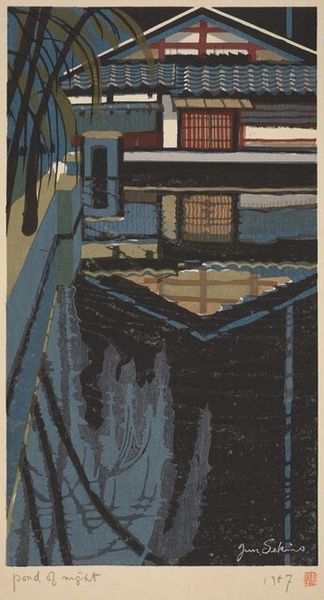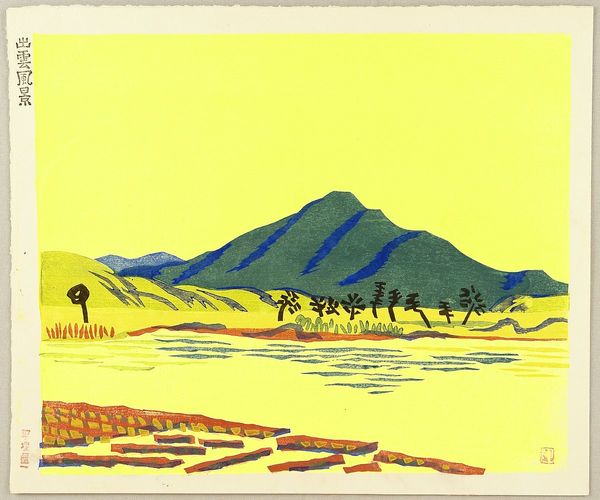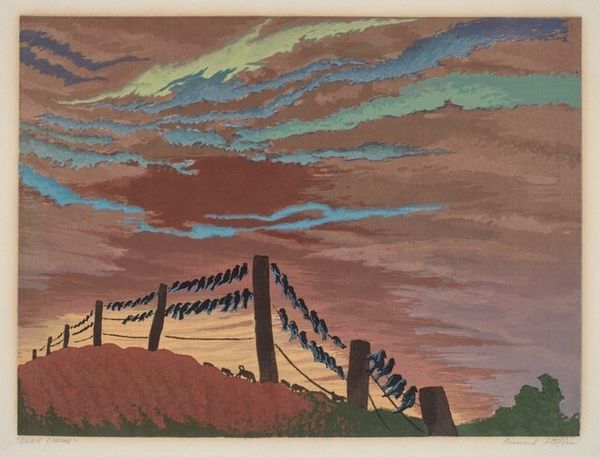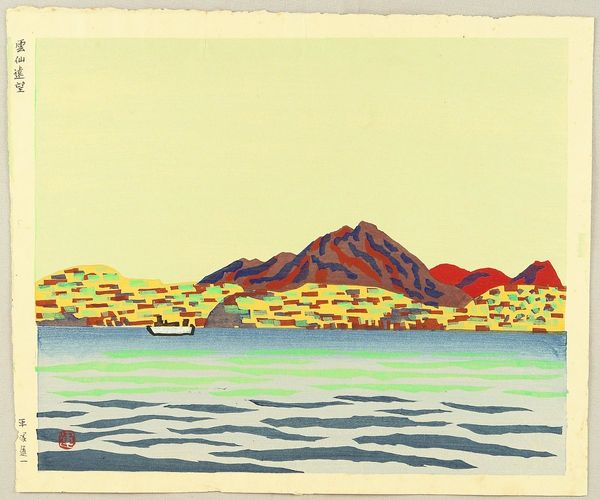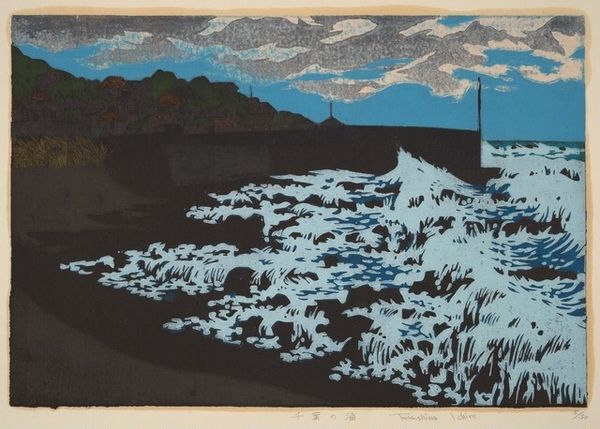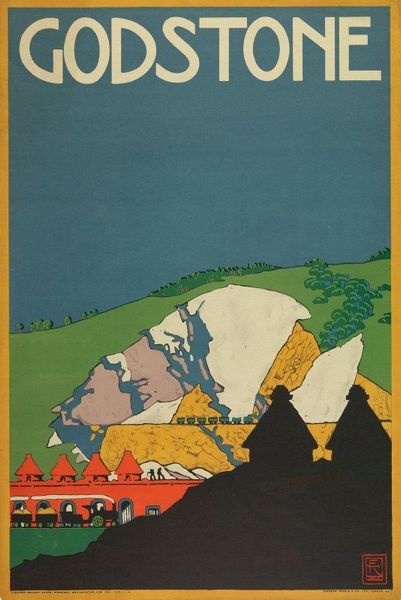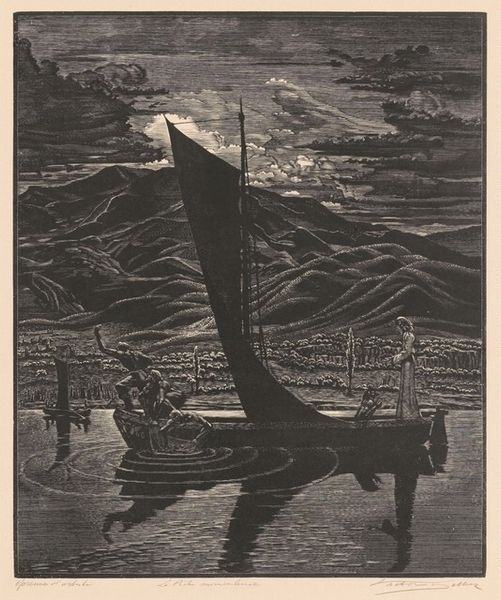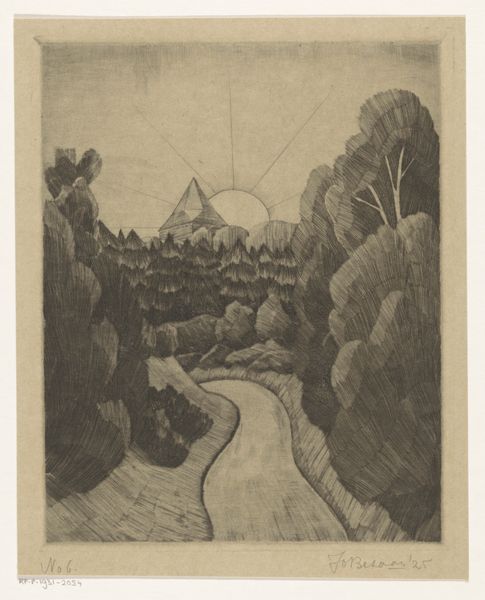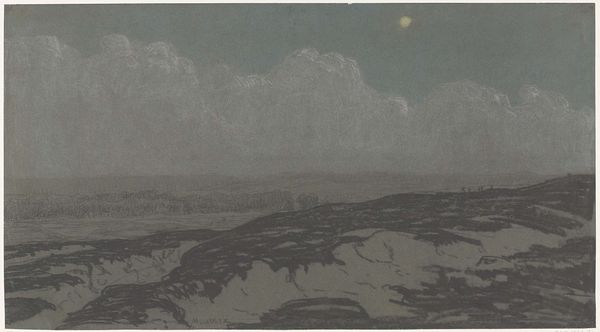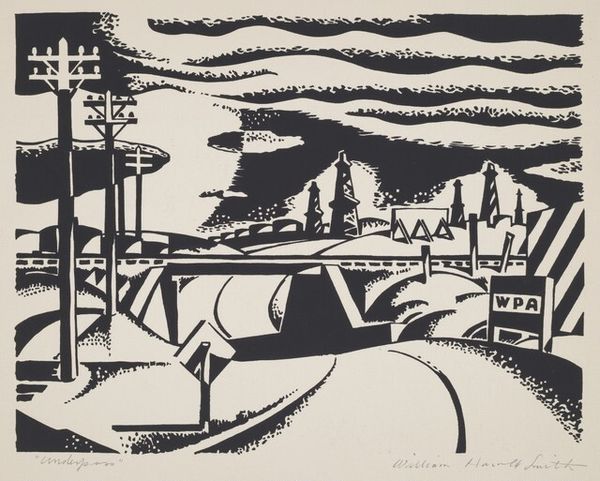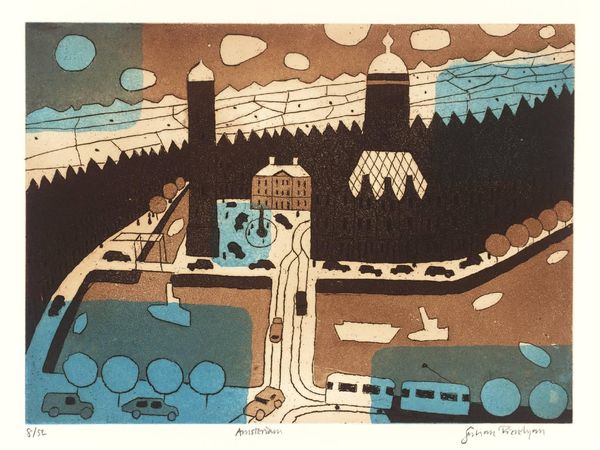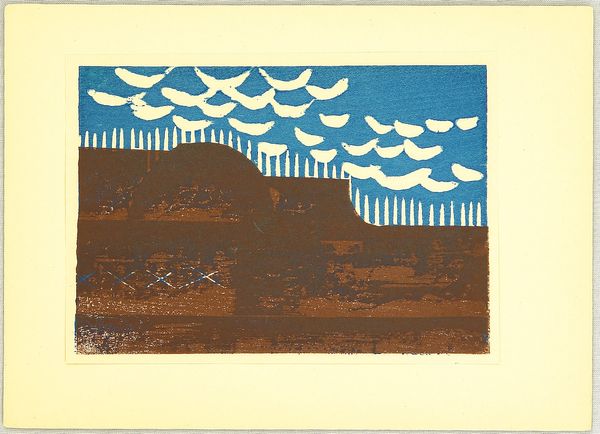
print, watercolor, woodblock-print
#
water colours
# print
#
landscape
#
watercolor
#
woodblock-print
#
naive art
#
united-states
#
cityscape
#
modernism
#
regionalism
#
watercolor
Dimensions: 11 3/4 × 10 9/16 in. (29.85 × 26.83 cm) (image)12 7/16 × 11 in. (31.59 × 27.94 cm) (sight)20 15/16 × 19 3/4 × 1 1/4 in. (53.18 × 50.17 × 3.18 cm) (outer frame)
Copyright: No Copyright - United States
Elizabeth Colborne created "Lumber Mills in Bellingham Bay" using a woodcut technique. The scene unfolds with geometric precision, balancing industrial activity with natural elements, evoking a sense of both dynamism and melancholy. The composition is structured in distinct horizontal layers: from the grid-like stacks of lumber in the foreground, the bay in the middle ground, to the distant mountains and the sky above. Each segment is rendered in flat planes of color, characteristic of woodcut prints. The plumes of smoke rising from the mill’s chimneys introduce a vertical counterpoint, their soft, billowing forms contrasting sharply with the rigid lines of the lumberyard. The use of color here isn't merely descriptive but symbolic. The warm hues of the sky meet the cooler tones of the bay, creating a visual tension that mirrors the complex relationship between industry and nature. Colborne destabilizes traditional landscape painting by focusing on how industrial structures can coexist with the natural landscape. This print prompts reflection on how we perceive and interact with our environment.
Comments
minneapolisinstituteofart almost 2 years ago
⋮
In 1933, about the time she made this print, Elizabeth Colborne moved to her cabin in the Pacific Northwest to paint. The cold, rainy weather did not always cooperate. She wrote in her diary, “I did not come down here to burn up trees but to paint them. But it rains, so I have to burn.” The entry illustrates Colborne’s affection for the natural beauty of the Northwest. It also illustrates how it must have pained her to see these logs awaiting the saw mills in the waters of Bellingham, Washington, where she grew up. How did Colborne create such a fascinating modernist woodcut' As a student in New York in the early 1910s, she had one of the most famous art teachers in America: Arthur Wesley Dow (1857–1922). Dow’s teaching was inspired by the design of Japanese woodblock prints, and we can see Colborne applying Japanese design elements to this industrial setting. For example, she simplified the shapes and focused on patterns, like the mass of parallelograms on the dock. She used flat, unshaded colors and carefully harmonized them. And she minimized the illusion of depth, instead giving the impression that, except for the diagonal plumes of smoke, each section of the print is simply stacked on top of the one below it.
Join the conversation
Join millions of artists and users on Artera today and experience the ultimate creative platform.
